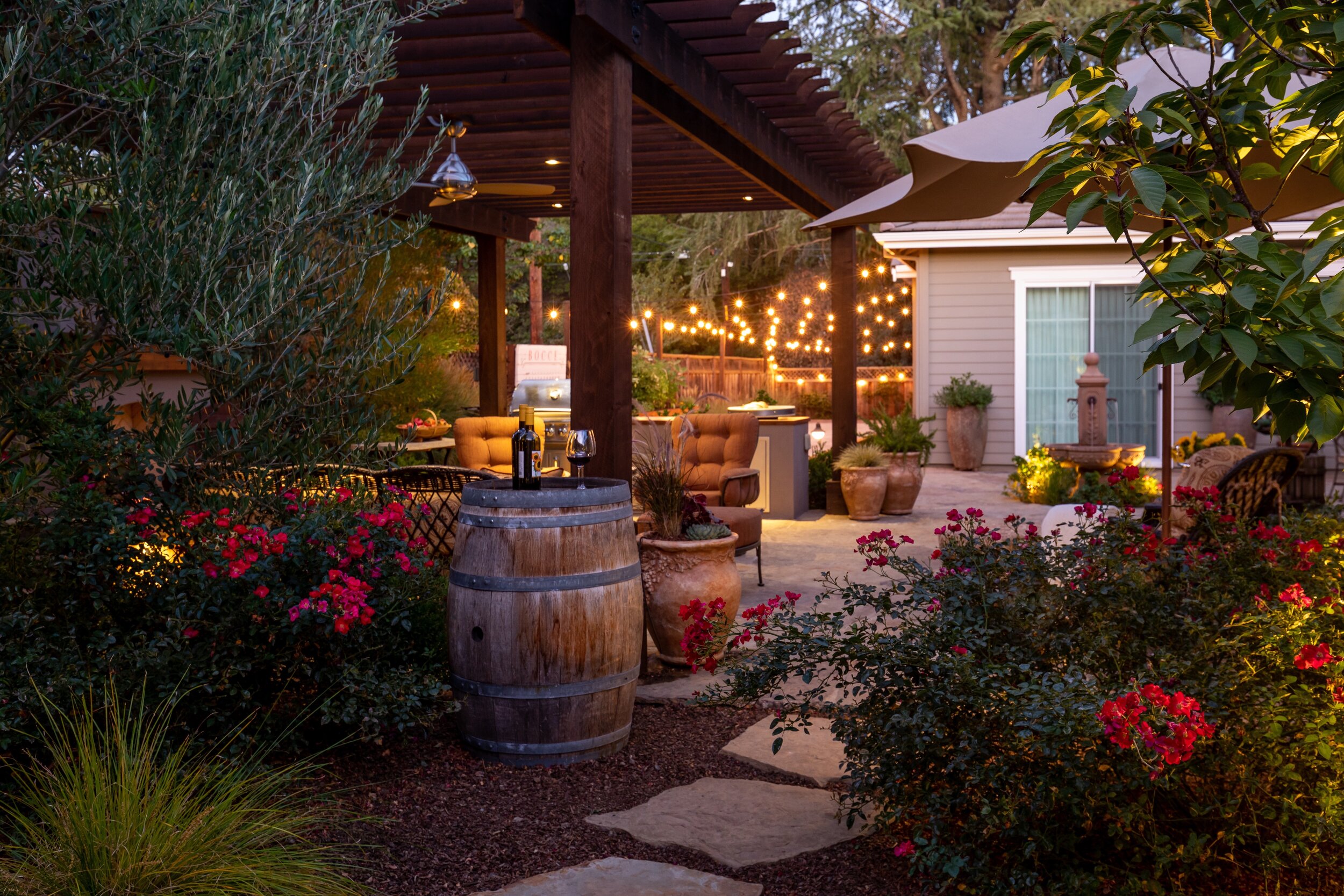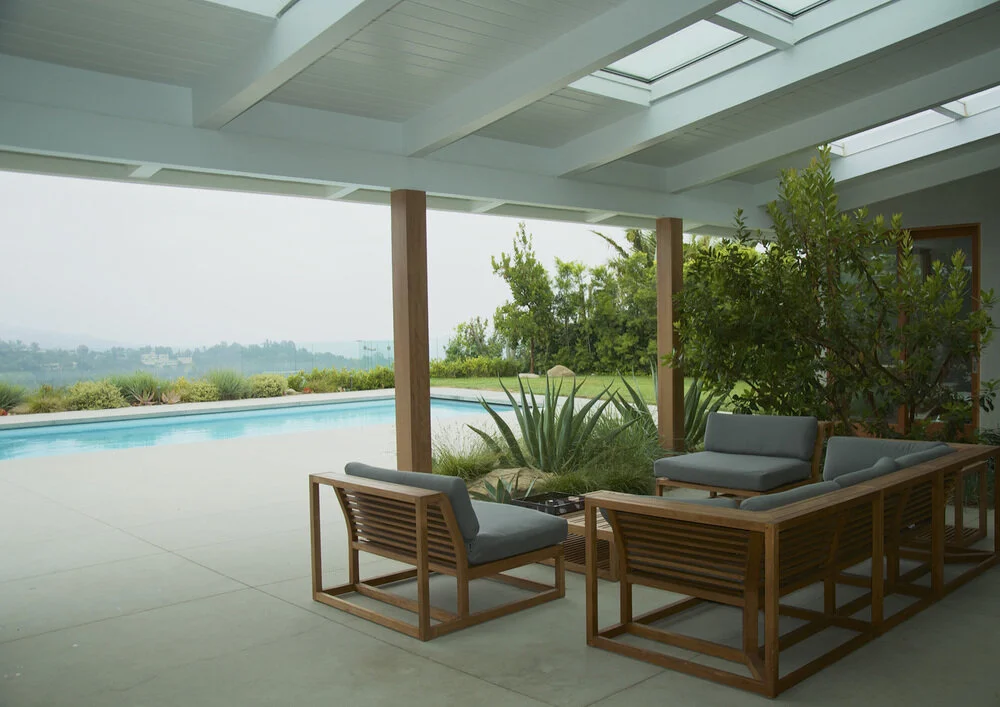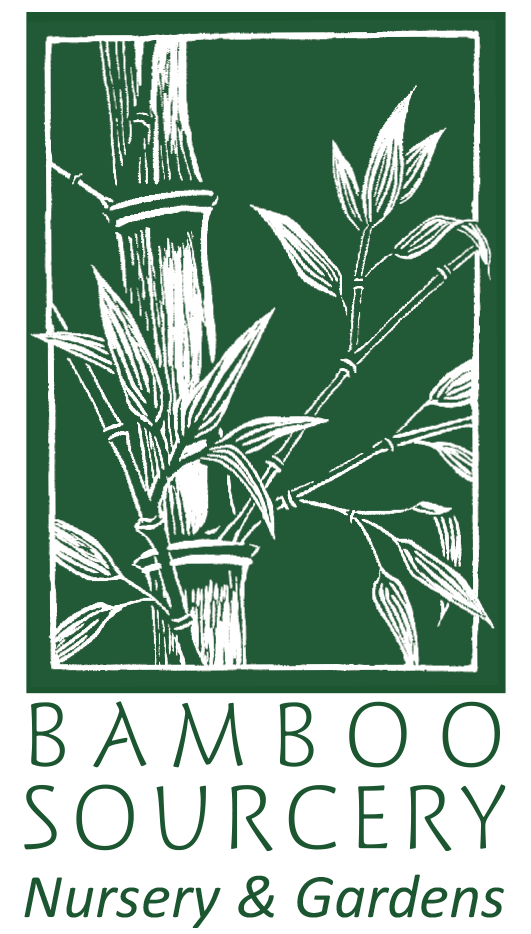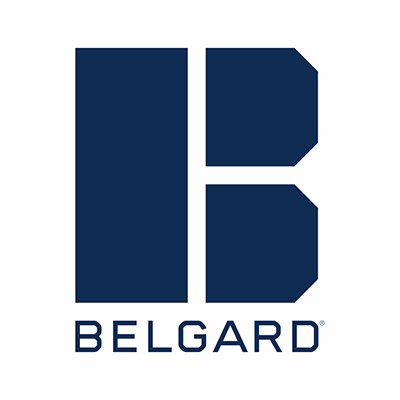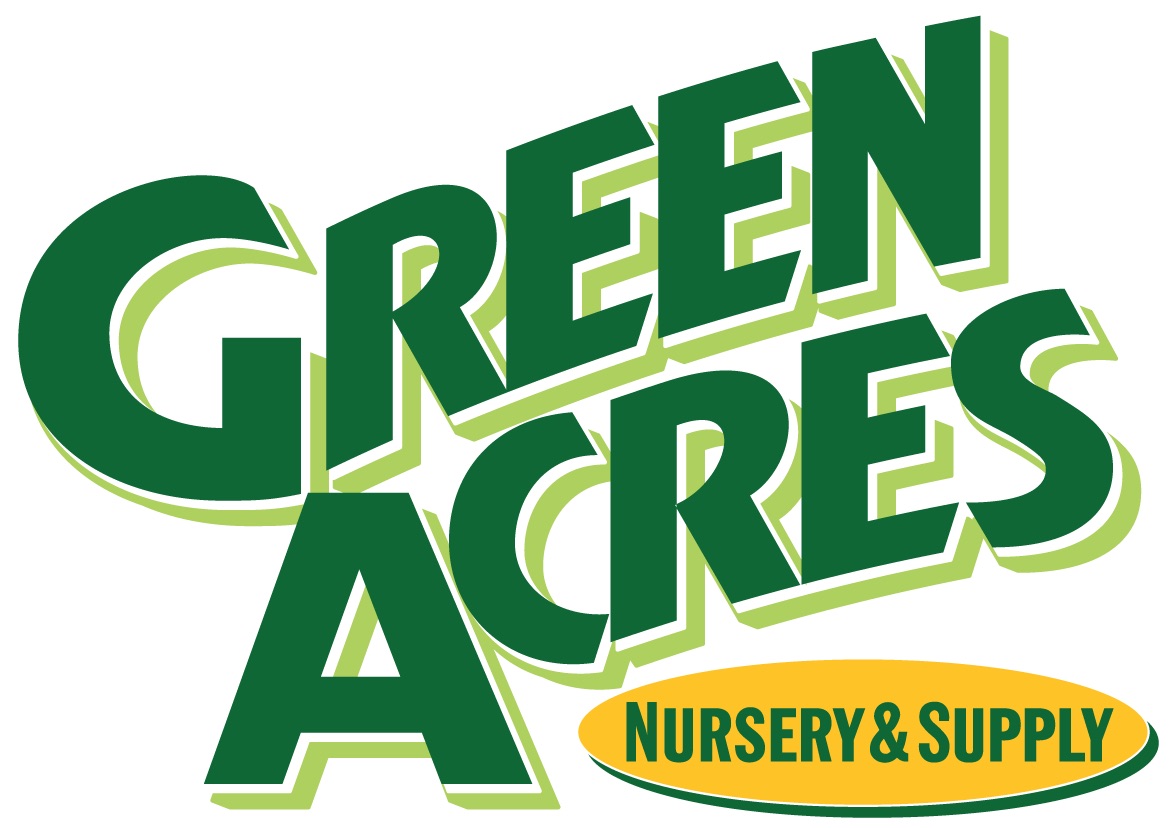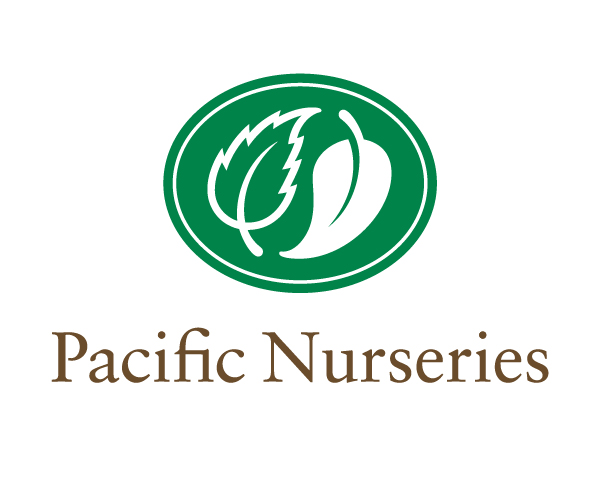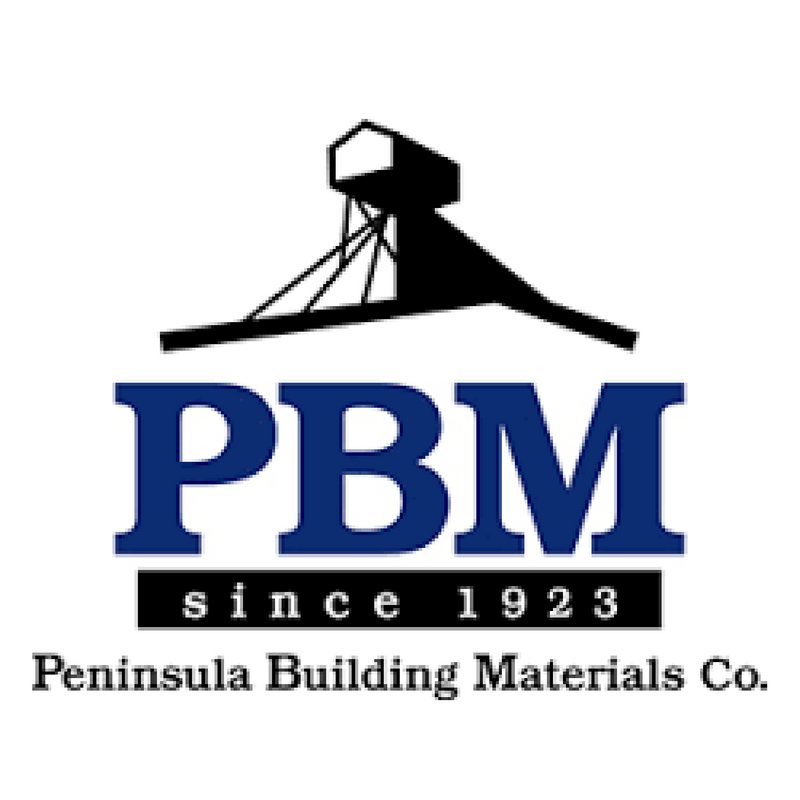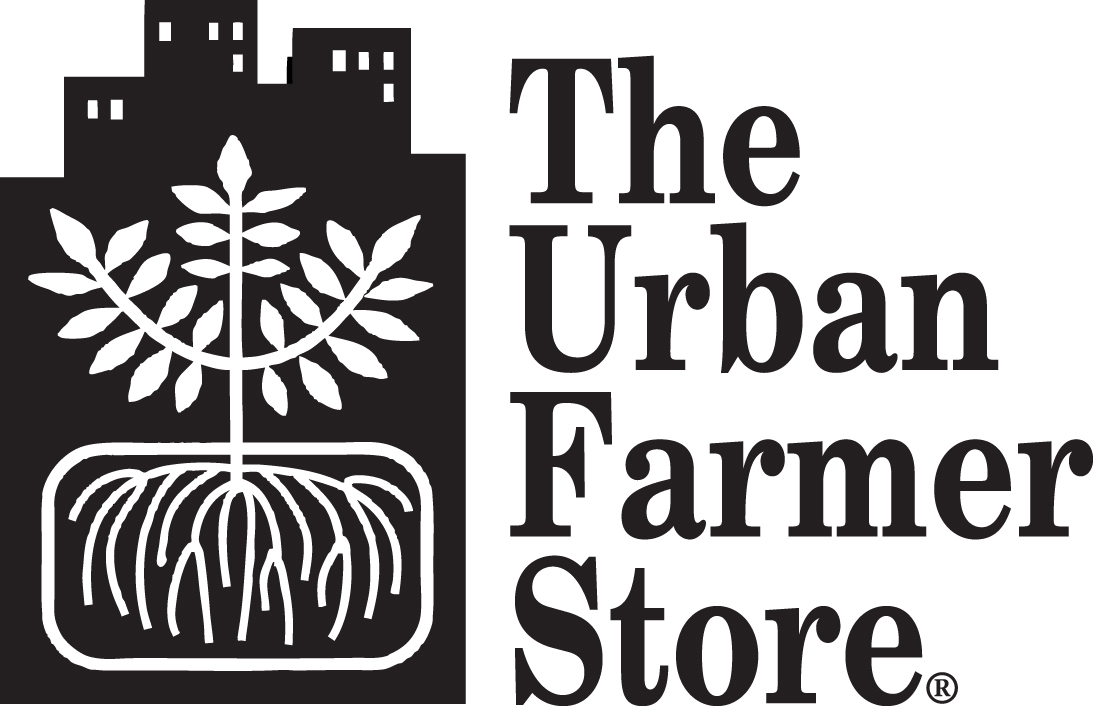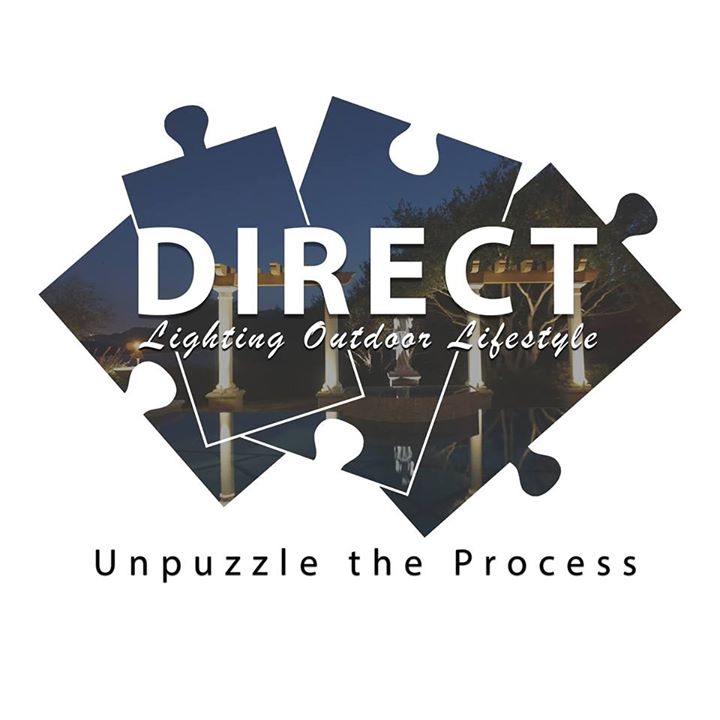FROM THE CHAPTER PRESIDENT
Martin G. Carrion van Rijn
Greetings,
For this issue of California Landscape Design, members of APLD’s Bay Area District have explored the topic of designing landscapes from the “Inside Out.” Reading some of the articles, I am amazed and pleased to see how many points of view we can have on the subject. I find myself remarking out loud in wonder, “talk about diversity!”, “talk about creativity!” During one of my conversations with John Black, Bay Area District President, I was encouraged to add my perspective on the topic, which as it turns out is very close to my heart.
As President of APLD CA, I am finding that in addition to all the responsibilities that come with the role, there are many benefits. One of these is how the position asks me to bring certain aspects of myself out, which I wouldn’t otherwise have done on my own — becoming more outspoken, for instance — allowing me to grow as a person and in the profession, growing from the inside out. I strongly encourage every APLD member to take full advantage of your membership and enjoy these benefits yourself, by getting more involved in APLD: participating in more events, and/or stepping up into leadership positions at the district or chapter level.
As a designer, I have often posed the question, “why do we do things the way we do?” Why do we landscape the way we do? What are the motivating factors that make us approach our work in a particular way, from a particular point of view? The answers I have found lead me to believe that the way we do things is nothing more and nothing less than a true reflection of who we are. In a way, we can say that with every landscape, we bring something from within out into the world. Our designs are an extension of ourselves.
And it does not stop there: in my opinion, in order to serve our clients, we need to understand who they are, what they value… deep down, what motivates and drives them. I feel that only when we grasp that can we serve their vision, what they want, what they need. When we understand what their relationship is to the world, to nature, towards themselves, and towards others, we can provide value based upon what is within them as well as from our own expertise as designers.
Furthermore, I believe that as landscape designers, we are particularly well positioned to study, explore, expand, and influence those values rooted in our “inner landscapes” and connect them to larger and larger communities of people and places. In doing so, we can serve from a place of deeper awareness and understanding, and bring those values out into the world, manifested in the landscapes we create for our clients and communities.
From my own experience, I believe keeping these questions in mind at all times, and being able to explore and evolve them with like-minded individuals such as our APLD colleagues, allows us to keep learning and growing as individuals and professionals alike, refining the windows through which we perceive and experience the world, the doors through which we express ourselves into this world full of beauty and wonder.
May you find as much value in this issue as I have.
Sincerely,
Martin G. Carrion van Rijn
CONTENTS
Simply scroll down to read the articles.
You may also click on the section titles below.
Letter from the Chapter President
Martin G. Carrion van Rijn
Outside My Window by Lorri Hart
Inside the Garden Orchestra by Bianca Vallorz
Flooring to Bring the Indoors Out by Lisa Parramore, APLD
Inside Out Plants by Shireen Zia
COMMUNITY CONNECTIONS:
Connecting People and Plants by Arlene Ferrara, HTR
Welcome New Members
Welcome New Sponsors
Home Has Never Been So Important By Jessica Hewitt of Humboldt Sawmill
Lighting the Landscape From the Inside Out by Jeff Calhoun of FX Luminaire
Plants Mentioned in this Issue from Devil Mountain
A special thank you to John Black and the
APLD Bay Area District for sourcing the content for this issue.
Photo courtesy of Lisa Parramore.
Outside My Window
by Lorri Hart
Clear The Way Landscape Design Napa, CA
I’m staring out the window on a dark winter night in Minnesota. It’s snowing heavily. Suddenly, the headlights of my dad’s car turn into the driveway and mom turns on the porch light. The illumination makes the snow come alive! Before the lights, it was a monochromatic picture. Once the crystalline flakes were lit against the black night, what had been mundane became thrilling to watch.
What made the snow more exciting when the lights came on? It became luminous because of the extreme contrast between the black sky and white snowflakes.
As a child, I stared through windows all the time, longing to be outside. I was fascinated by the weather, the clouds, and the movement of the trees in the wind. Observing nature through the window was my next best choice when I couldn’t play outdoors.
This familiar vantage point has served me well as a landscape designer. I like to start every design inside the house, looking through the windows and doors to understand how clients will experience their garden through the framed views from each room. It’s an inside-out approach.
Photo courtesy of Lorri Hart
A current project brought this concept home to me. The home and entire landscape had burned to ash in the 2017 Atlas fire in Napa, so we were starting with a blank slate. The only surviving tree was just beyond the back property line, a nice redwood. Months into the project, the new construction had reached a point where I was able to step inside and walk around on the elevated main floor. This was my first view of what the clients would see from each window and door.
To my surprise, I realized the lone redwood tree was directly centered in the view entering the front doors all the way out to the back picture windows! I was excited by how my design focus had just shifted. From this vantage point I was able to see something that was not perceptible when I was outside at ground level, walking around the house.
It’s important to think about how a design will look from different indoor and outdoor perspectives, but also at different times of the day. Most of us only visit our clients’ homes during daylight hours, so that is where we draw our inspiration from. But a design should delight at all hours! Imagine how your designs will look at night, from inside the house. Will it thrill your client like the lit-up falling snow? Will it provide calm and serenity when they lay down to rest?
When designing for nighttime, lighting and contrast are important tools for making your designs stand out. Imagine a romantic moonlit garden. White, pale pink, and light yellow flowers shine, and silvery foliage glows (think Correa ‘Ivory Bells’), while the reflective surface of water in a birdbath glimmers. Light-colored foliage and high-contrast designs are important components of a moon garden, which allows us to enjoy a landscape well into the night hours.
Gorgeous effects, from subtle to exuberant, can also be created with landscape lighting. I remember staring out my hotel room window in Hawaii at night, at the brightly-lit breaking waves on the beach. It was dramatic. Hotels often shine floodlights at the surf to accentuate this phenomenon of nature in continuous motion.
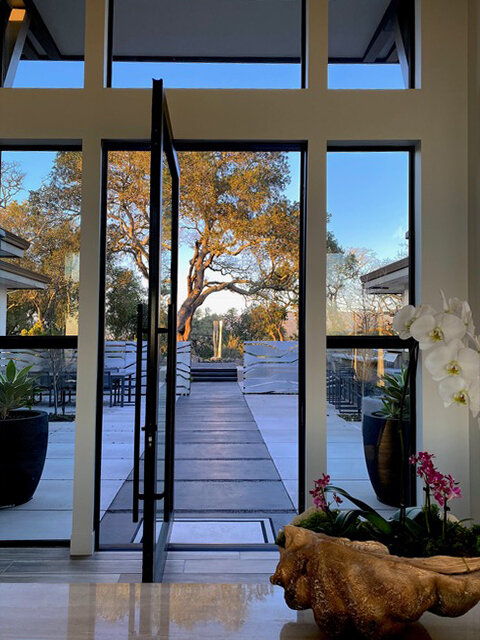
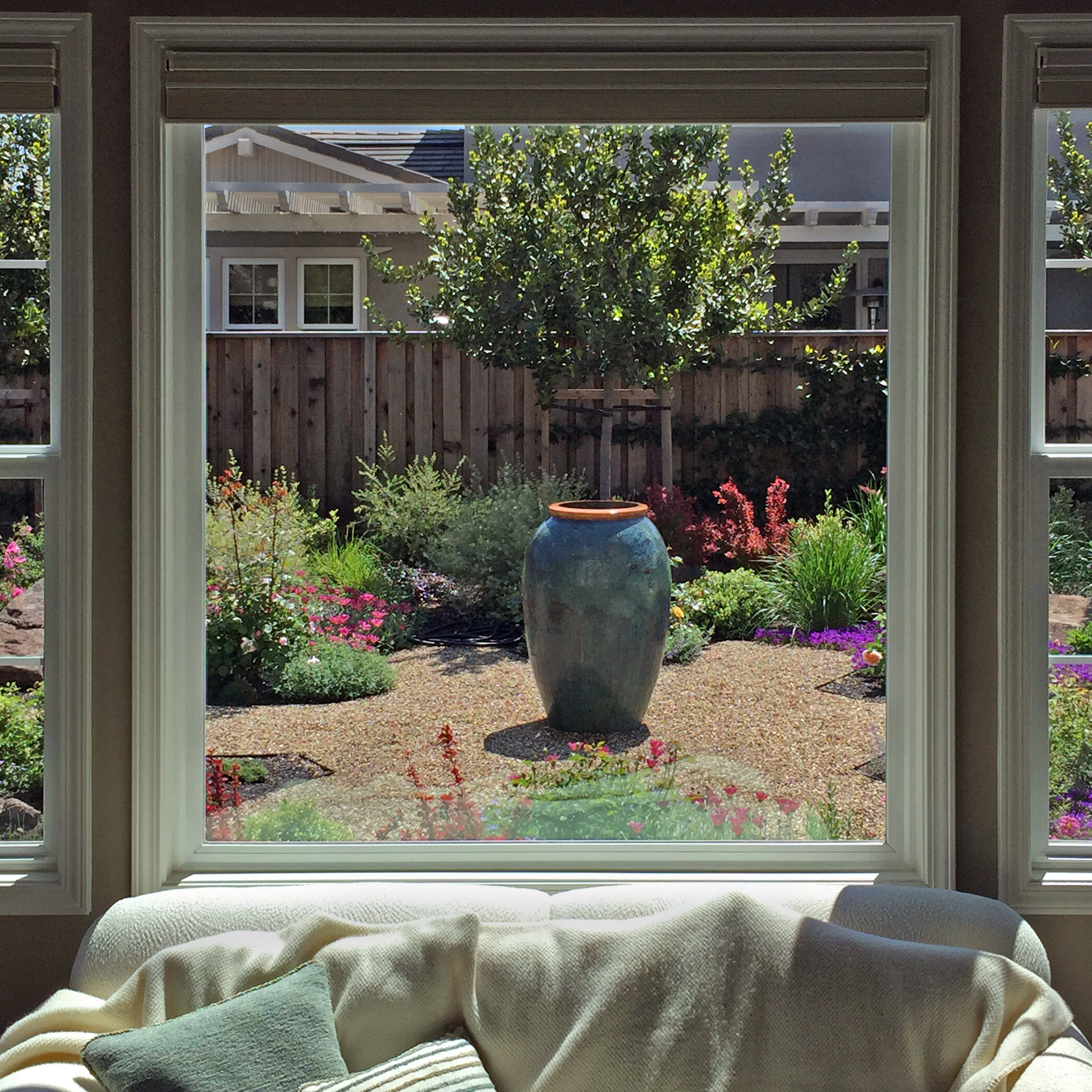
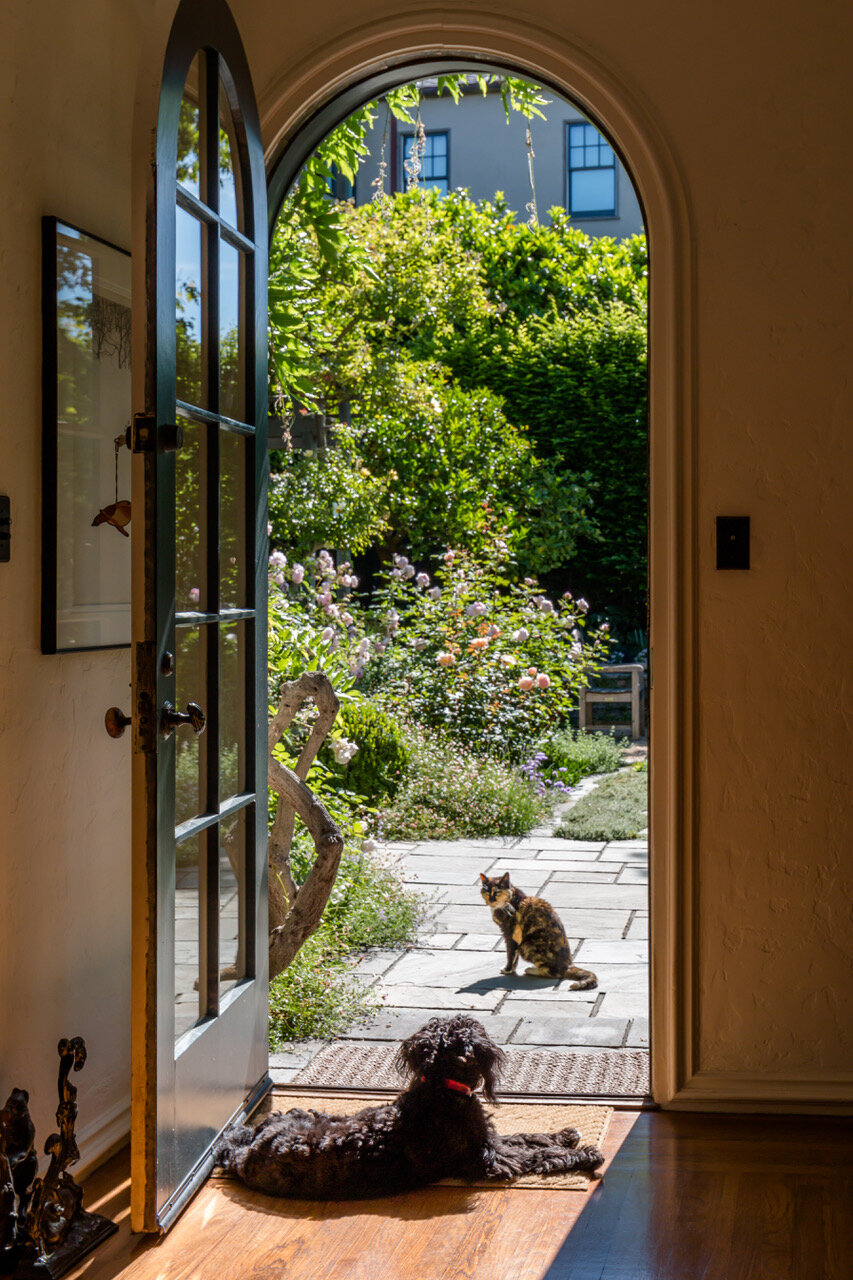

Perhaps there is an opportunity for you to create a calming or dramatic effect by lighting some element of the garden that will show movement, like fluttering leaves in the tree outside the bedroom window. It’s not always apparent, but during the design process it may be worth thinking about what they will see when laying on a couch or in bed at night.
Biophilic design is an emerging science that has proven the value of connecting to nature for our health, well-being and productivity. As more people work from home, think about how necessary it is for them to take a break from their computer screen every so often to stare out the window. By providing a visual respite for our clients with a well-framed garden view we can increase their productivity and ultimately their sense of well-being.
The movement of birds, bees, and butterflies can make an environment come alive. Encourage this by planting nectar-producing plants such as Salvia ‘Amistad’ and providing water to attract them, particularly near the windows people use most often. Many studies have shown that watching birds out the window can improve our mental state and cognitive functioning. It’s gratifying to think we, as designers, are improving not just the environment, but the health and well-being of our clients.
Try designing your next project from the inside out by spending time with the client inside their home, and at different times of day. It may increase your understanding of their needs as you sit in their desk chair, stand at their kitchen sink, or even observe what they will view from their own bed!
Give your clients the benefit of your ‘designer’s eyes’ by sharing their indoor experiences of the world outside their window. It may just be as important as the time you spend with them walking the garden as you are creating their new landscape.
Inside the Garden Orchestra
by Bianca Vallorz
Golden State Gardens San Jose, CA
Ceanothus and Muhlenbergia rigens are used to add interest in the garden by contrasting forms, textures, and colors.
A beautifully executed landscape design is an orchestra, and we, the landscape designers, are the conductors. Our pen is the baton, the tracing paper is the sheet music to compose our ideas, and the plants are the notes. Much like the different members of an orchestra, each plant plays a specific role to help it shine as a specimen, provide structure as a background shrub, or add contrast in form, color, or texture. Whether the plant’s purpose is to elicit excitement, create a private screen, or provide a food source for local pollinators, each element has a purpose, a reason for its inclusion in the orchestra. An incorrectly placed element can throw off the entire balance and shatter the harmony.
Both of the clients’ San Diego, CA and Atlanta, GA backgrounds are built into this earth friendly landscape design.
I often come across people who do not understand how each element contributes to the harmony of a design—they assume that designers simply select a few plants to place anywhere. However, every design is special and unique, catered to the individual client’s needs, desires, likes, and dislikes.
Upon first meeting the clients, I listen to their story, asking them where they grew up and their favorite season. Some question the importance of their childhood city to the design, but it is my belief that knowledge of these minute details helps me create a more intimate landscape. For example, I had two clients who requested a California native landscape. After finding out that one owner was from Atlanta, Georgia and loved large established trees, while the other was from San Diego and loved native wildflowers, I was able to compose one cohesive landscape encompassing both of their landscape interests. The landscape includes an open wildflower meadow in one space, and a patio with a southern plant palette in another space, while large trees are used to create balance and frame the property. Understanding your clients is the first, and most critical, step to creating something they will love for years to come.
Helictotrichon sempervirens adds color and texture contrast, excitement, and frames the Ceanothus maritimus ‘Valley Violet.’
Following the initial meeting, I perform a site analysis, examining the sun location, drainage and grading issues, privacy, limitations, and opportunities. Examining the entire residence and property is a crucial step in my design process and serves as a basic component for creating a base plan.
A hummingbird enjoying an evening sip of nectar from the bright red Epilobium canum.
Photos courtesy of Bianca Vallorz.
After the construction of a base plan, the real creative expression starts to emerge. Taking a few moments to look through the site photographs and analysis, I quickly jot down potential locations for key elements. Perhaps the ideal place for a private hot tub is located along the west fence overlooking the east foothills in order to romanticize the slow-setting summer sun? Or perhaps the “secret garden” can be tucked under the large existing redwood tree, thereby creating a private space from the neighbors’ house on a hill? Or perhaps the broad deciduous tree is used to balance the landscape with the protruding driveway?
Once the elements are properly placed, hardscape and planting beds are formed. Again, listening to the clients is the best tool for identifying their style preference. If the clients have modern tastes they may prefer harder edges and clearly defined lines, or if they are “woodsy” types they may prefer softer forms.
Next comes plant selection. An immense amount of decision and weight goes into identifying the right balance of contrasting elements, while still creating a cohesive design—deciduous vs. evergreen, tall vs. short, fragrant vs. non-fragrant, sharp edges vs. soft edges, green leaves vs. gray leaves, or purple flowers vs. yellow flowers. Too much of one element will skew the beautiful melody the plants are playing, making them appear “out of tune” with one another.
Each step along my design process is vital in creating a stunning landscape design. However, it is in the final step of plant selection that the design comes to life and sings with excitement. It comes to life in the blue-green Helictotrichon waving to you in the breeze. It comes to life in the Cercis tree whose heart shaped leaves change from lime green to golden yellow as she prepares for winter hibernation. It comes to life in the Epilobium’s firecracker red flowers enticing her friend, the hummingbird, to drink her sweet nectar. The garden orchestra is playing beautifully for all to hear—all we have to do is listen.
Flooring to Bring the Indoors Out
by Lisa Parramore, APLD
Harrell Remodeling
Palo Alto, CA
Photo courtesy of Kebony.
Bringing the indoors out is an emerging trend in the field of landscape design and outdoor living. The demand for an outdoor space as inviting and comfortable as its indoor counterpart is driving new products and materials that allow designers to meet our clients’ increasingly sophisticated needs. In particular, the flooring we choose can define the look, feel, and function of our outdoor rooms.
How many of us have talked to clients who want to step outside onto a deck or patio without stepping down? A deck can usually serve this purpose quite well, but what about tile, stone, or pavers? Clients are sometimes surprised to learn what is required to continue the look of stone or tile at the same level as the interior. It may require flashing to separate the exterior wall from the new raised patio, or the designer may have to re-locate electrical outlets, vents, downspouts, or hose bibs. A step (or steps) down to grade will be necessary at some point, but this can be an opportunity to direct how people move throughout the back yard. A railing, built-in bench or planters along part of the perimeter can make the space feel cozy, and the openings can direct circulation patterns to other focal points in the yard. Such elements can also help alleviate the effects of any uneven grade.
Photo courtesy of Lisa Parramore, APLD.
Continuity of materials is another area that designers may consider. If the adjacent interior room has hardwood floors, a decking material that complements the direction, color, grain, and plank size can make the spaces look and feel cohesive. The sheer number of decking materials available now can be overwhelming, but specialty decking stores are an excellent resource to learn about them and obtain samples. Concerns about how redwood and ipe (also called ironwood) are harvested have spawned innovations in composite wood choices, and more recently, “modified wood.”
Composite woods and their cousin, PVC, have improved in quality so much that 25 or 30-year warranties are now commonplace. While most of them cannot mimic the look of natural wood, the variety of colors and patterns allow the designer to select almost any shade—from red, brown, and gray undertones. My favorite is Zuri, which has a realistic wood grain superior to its competitors.
The emergence of modified wood products such as Kebony and Accoya present additional opportunities to design sustainably. They offer durability and a similar patina to natural hardwoods. Bamboo decking, certainly a contender for sustainability, had an uneven entrance into the market a generation ago, but companies such as Moso now offer a product that comes with a 20-year warranty.
Photo courtesy of Belgard.
If the interior floor is tile, expanded options to match or complement await us! Natural stone such as slate still works as an excellent choice both inside and out (except for shower floors due to the inevitable calcium deposits). One exciting trend is the array of outdoor porcelain products on the market. The trend is happening at both ends of the market: paver companies such as Belgard now offer porcelain pavers and tile companies such as Arterra now manufacture outdoor porcelain pavers in the same designs as their indoor counterparts. Many of these pavers are just two centimeters thick and of course need to be installed over a concrete slab if the finished height is to be even with the home’s interior, but they are also strong enough to be installed over base rock and sand at grade, just like traditional concrete pavers. Plank-like sizes with wood-grain designs continue the look of an interior wood floor, while large format porcelain pavers boast lovely muted and mottled patterns and textures that are well-suited to contemporary architecture. Porcelain pavers do not stain and the larger format pavers reduce installation time; coping paver options can be used at step edges.
Take a closer look at these different flooring materials, and keep them in mind as distinctive ways to bring the indoors out in your next project!
Inside Out Plants
by Shireen Zia
EarthCare Landscaping
San Jose, CA
Whether you are designing a landscape for new construction or sprucing up a mature garden, a few plants always come to mind which you know can never disappoint no matter which palette you use them in. As designers we search for plants that will not only bring life to our designs and an inviting outdoor living experience to our clients, but also serve a larger purpose to help amend the soil and support a healthy ecosystem. I am sure you have already pictured a few of your favorite plants; but are they as beneficial inside the soil as they are above ground?
Allow me to present three versatile plants that can be part of any landscape, to help nourish the soil and sustain the local ecology. Which one will become your go-to “inside out” plant?
Photo courtesy of Emerisa Gardens.
Achillea millefolium (Yarrow)
Inside:
Soil Amendment: Achillea helps to improve the soil biology. Its deep roots accumulate potassium, phosphorus, and copper from the subsoil and distribute them as fertilizer to the surrounding soil.
Erosion Control: Due to its high drought tolerance and deep root systems, Achillea can be an excellent ground cover for erosion control.
Fertilizer: Yarrow roots also secrete substances that attract nitrogen-fixing bacteria; whether planted in the garden or composted, yarrow will encourage soil microbes that improve garden productivity and overall health while reducing the need for chemical fertilizers.
Permaculture: Yarrow can be used as a living mulch in dry areas. It is commonly used under fruit trees as a cover crop to help fertilize and enhance fruit production.
Outside:
Pest Management: Yarrow flowers help to wards off pests in the landscape by attracting beneficial insects like lacewings, parasitoid wasps, ground beetles, ladybugs, and hoverflies. The oil of Achillea leaves can even be used as a mosquito repellent.
Rain or Shine: Achillea is extremely resilient and grows well with little water during the hot summer months, yet it also thrives in rain gardens.
Herbal Properties: Yarrow can be used as an astringent to treat minor cuts and scrapes. It’s also used as an ingredient in tea, soups, beers, and other alcoholic beverages.
Long Blooming Season: Yarrow can bloom from late spring through the early fall.
Pollinators: Achillea flowers are a favorite of butterflies and bees, and its leaves feed caterpillars of all kinds.
Compost Starter: Yarrow is an excellent compost starter plant, or simply use it as a “chop and drop” mulch to build soil.
Photo courtesy of Emerisa Gardens.
Echinacea species
(Perennial Coneflowers)
Inside:
Immunity Booster: Echinacea is said to provide many health benefits, notably reducing inflammation and bolstering the body’s immune system to fight infections, especially the common cold and flu. Echinacea purpurea is the most versatile coneflower variety since the whole plant can be used; only the root and rhizome of Echinacea angustifolia and Echinacea pallida are considered beneficial.
Antioxidant Effects: Coneflower roots, leaves, and flowers are rich sources of flavonoids and alkamides that can help to protect the body against the long-term damage caused by oxidation.
Pet Friendly: The benefits of Echinacea may extend to pets such as dogs and even chickens, helping them recover from viral and parasitic infections.
Outside:
Improves Mood: The sweet fragrance of Echinacea can help to decrease feelings of sadness and stress.
Versatile: Plant breeders have developed a wide variety of colors to suit any garden palette, from the traditional purple to shades of pink, white, yellow, and orange.
Durable: Echinacea thrive in full or part sun and tolerate afternoon heat and clay soil. They are reasonably drought tolerant once established and semi-deciduous in some areas.
Long Blooming Season: Coneflowers bloom from spring through fall, and the seed heads provide structure and interest in the winter garden as well.
Habitat Plant: Echinacea species are great in rain gardens, and their flowers sustain pollinators and parasitic wasps. When the spent flower heads are left on the plant, their seeds nourish goldfinches and other songbirds.
Photo courtesy of Wikimedia Commons.
Symphytum officinale
(Common Comfrey)
Inside:
Soil Amendment: Comfrey is a “dynamic accumulator” that pulls in a lot of nutrients from its tuberous roots. When the foliage is cut and left as mulch, it revitalizes the shallower soil layers with minerals such as calcium and magnesium that would otherwise be hard to access.
Compost Tea: Symphytum is high in just about every nutrient a plant needs, including the big three — nitrogen, phosphorus, and potassium — as well as many trace elements, making it an excellent base for home-brewed compost tea.
Clay Buster: The large, thick taproots of Comfrey may grow six feet deep or more, making it useful for breaking up heavy clay soil.
Permaculture: Comfrey’s nutrient profile makes it one of the must-have plants for a permaculture garden, especially beneficial to fruit trees. Comfrey can be used as “green manure,” as an alternative or supplement to animal manures as a soil amendment.
Outside:
Healing Herb: Symphytum has been cultivated since about 400 B.C. as a healing herb. Commonly known as Knitbone, it contains allantoin, which promotes cell growth, and is traditionally used topically to treat cuts, rashes, bruises, and sprains. (However, comfrey is considered unsafe for consumption because it contains toxic alkaloids.)
Chop and Drop: Comfrey can easily be used to add nutrients to the soil by chopping up the leaves and dropping them around the base of fruit trees or heavy-feeder plants.
Top Dressing: Powdered comfrey leaves can be used as fertilizer in late winter or early spring before the garden has begun producing new foliage. The powder decomposes more readily than fresh leaves, which is advantageous for the spring garden.
Background Plant: Even if you are using Symphytum mainly to provide support to the ecosystem of the yard, its bold, bright green foliage makes a beautiful background filler.
Pollinators: The bell-shaped pink, purple, or cream-colored flowers attract native bees, butterflies, and hummingbirds from late spring into autumn.
The next time you’re developing a plant palette, consider the many virtues these specimens possess and look into the benefits that other plants can provide both inside and out!
Photo by Katrina Coombs, design by Joel Lichtenwalter.
Community Connections
Connecting People and Plants
by Arleen Ferrara, HTR
Satori Garden Design and Therapy
Santa Monica, CA
Now more than any other time we landscape designers are seeing a heightened need for our services. The endless stay at home orders have caused homeowners to squarely confront their outdoor spaces head-on and ask more of them. At the same time many of us are finding solace in nature since it’s one of the few safe places we can spend time. Even the trend to grow indoor plants has increased from its pre-COVID uptick as people recognize how nurturing a plant and/or garden can positively impact wellness. The people-plant connection is alive and well, and as a horticultural therapist it is wonderful to witness!
Horticultural therapy (HT) is a field that capitalizes on the positive impact that working with, touching, growing, and generally being around plants has on us humans. HT is used in a huge variety of settings, from humble shelters to big modern rehabilitation facilities, and employed to assist people dealing with a wide range of challenges or life situations. In its most formal of setting or programs these activities are referred to as Horticultural Therapy, while more informal settings are typically called therapeutic gardens. Whatever you call it, I like to think of the connection between people and plants as a vast expanse that allows for many pathways to wellness whether your goals are physical, mental, or spiritual.
Photos courtesy of Arleen Ferrara, HTR.
We designers can strengthen that people-plant connection for our clients. Often this starts simply with a conversation about plants they like and what they are looking for in a garden, and introducing the idea of their garden having a small but vital impact on the larger ecology around them. A space that supports habitat through nectar, seeds, and berries will not only increase the lively activity in the garden but will also deepen that person’s enjoyment of and connection to the natural world. Growing edibles and cut flowers will help further that connection. I like to take cues from little things I see at a client’s property to help build a design that gives them a deeper connection to their space. For instance, are they a rock collector? A tiny succulent propagator? Do they love pottery? Even the sad, abandoned houseplants tell you there’s a gardener waiting for a nudge.
If children will be enjoying the outdoor space it is great to give them their own area to plant and, more importantly, dig. Children get huge benefits from digging in the soil. It’s really where the people-plant connection starts, so an open unplanted section could be the perfect place to begin. A compost and/or worm bin would be another excellent addition if space allows. Most kids love watching the busy decomposers at work. Some children, especially those with sensory issues, may not want to feel soil or earthworms with their hands; but usually they warm up to observing and using tools in the garden. It is also good to provide plants that make large seed pods which can be collected and sorted. My personal go-to are fava beans and lima beans. The children I have worked with have never tired of cracking open the dried pods and sorting the beans. Many native plants, such as Aristolochia, Asclepias, and Aquilegia, also have seed pods that are fun to explore. (Obviously, avoid toxic species such as Aesculus and Ricinis.)
If there are older individuals that will enjoy the garden space it is nice to try and place some plants that have some significance to that person, whether it is a plant they once grew or one that takes them back to an area they once lived. Providing an older individual with a comfy seat in a sheltered place where they can be close to the garden action is excellent. The sense of smell is our most enduring sense as we age, so scented flowers, shrubs, and herbs can be particularly gratifying for senior gardeners.
Lastly, providing a potting table or other space for “garden puttering” is important. This is where seeds can be started and little garden volunteers can find their home in small pots. I think this area is where creativity really gets sparked and future plans are made.
Often I’m struck by how the beginning of my relationship with a client focuses on the “problems” of the garden. There’s a “how is the garden not serving me” kind of energy. I like to flip that on its head to put the homeowner more in touch with what their garden needs and how intertwined their very existence is with the natural world. I like to find a balance between the design demands of a project, such as creating cohesion, symmetry, and order, and the less obvious goal of nurturing a lifelong relationship between my clients and their garden. Sometimes this balance is tough to achieve but I take heart in knowing there is always another future gardener around the corner who needs my help, and a little nudge, to get outside and grow.
Welcome New Members
Please give a warm welcome to these new members of the APLD California Chapter.
Qualified Professional Members
A landscape designer who engages in the practice of landscape design for monetary compensation and contains more than 3 years of professional landscape design experience. Documentation of education and experience is required.
Adam Sharron
Spolia Design/Build
Santa Rosa, CA
Anastasia Kelly
APL Horticulture
Newport Beach, CA
Professional Members
A landscape designer who engages in the practice of landscape design for monetary compensation and contains more than 3 years of professional landscape design experience. Documentation of education and experience is required.
Stephanie Bower
Transcape Design
Agoura Hills, CA
Holly Selvig
Holly Selvig Landscape Architecture
San Anselmo, CA
Agnes Tung
Muzik Design Studio
Burlingame, CA
Emerging Professional Members
An individual who has been practicing landscape design for one to three years and is starting a career in landscape design. Membership requires affirmation of education and experience, but not documentation.
Donna Bodine
BeeLand Farms
El Cerrito, CA
Meghan Mahrholz
Ruby Street Nursery
Oakland CA
Darlene Beal
K & D Landscaping , Inc.
Watsonville, CA
Educator Members
A professional landscape design educator/teacher who is not practicing as a landscape designer.
Frank Niccoli, Environmental Horticulture & Design Department Chair
Foothill College
Los Altos Hills, CA
Allied Members
An individual practicing in a related and/or associated field to landscape design.
Susan Stansbury
Sage Creek Horticulture
Palo Alto, CA
Elisa Read
Horticulture Specialist at RIOS Inc.
Los Angeles, CA
Christina Sergy
Landscape Design Foreman at Armstrong Garden Center
Long Beach, CA
Student Members
An individual who is actively enrolled, on a full or part‐time basis, in a landscape design, landscape architecture or horticulture program. Membership is limited to five years of membership at this level and proof of enrollment must be submitted.
Robert Bennett
Vista, CA, San Diego District
Casey Massman
Bay Area District
Samuel Erickson
Venice, CA, Greater LA District
Jeannie Johnson
Oakland, CA, Bay Area District
Sarah Cornwell
Palo Alto, CA, Bay Area District
Jina Park
Beverly Hills, CA, Greater LA District
Ann Skartvedt
Bay Area District
Jeff Bishop
San Diego District
Getting To Know NEW MEMBERS
We reached out to a few members with questions so that we can all get to know a bit more about them and here’s what they answered.
Casey Massman, new Bay Area District Student Member
Q: Where did you grow up and what is your earliest experience in nature/the landscape there?
A: I grew up in Lander Wyoming, a small town nestled in the foothills of the Wind River Mountains. My Mom, Dad, Sister and I would drive up 'Sinks Canyon' to a trail which led to a majestic waterfall. We would take the day hike pretty much every weekend.
Q: What is your current favorite landscape design style and why?
A: The Marble Mountains and Trinity Alps up in Northern California worked out pretty nicely and one could argue there was intelligent design far past human capacity that went into forming them. Nature is the best teacher and I try to take as many cues as I can.
Q: Who or what inspires you?
A: Piet Oudolf, Jens Jensen and Mary Reynolds are great designers. I love Monty Don's 'Big Dreams Tiny Spaces' on BBC and how he works with the clients to solve problems and consult them while giving them a lot of agency over the act of creating the space of their dreams themselves. I feel like once someone has put the time and energy in manifesting something with their own hands they have so much more of an appreciation and relationship with it.
Q: What environmentally sustainable concepts do you apply to your landscape design practice?
A: My introduction into landscape design was permaculture design and I believe that beyond being sustainable we have the power to regenerate the land, improving the biodiversity, and strengthening the web of life that supports us. I do that by focusing on drought tolerant, native, and edible plants in my designs. An understanding of the soil food web is also fundamental in my approach to keeping the landscapes I manage thriving.
Q: How did you find out about APLD and what led you to join?
A: I'm just finishing my Landscape Architecture Degree at Merritt College after a meandering six years trying to soak all the incredible classes in. The teachers have always spoken quite well of the APLD community and strongly encourage students to join.
Q: What do you hope to gain through your membership with APLD?
A: Professional connections, mentorship, friends, new tips and tricks, resources for questions. I want to be a part of the greater design community and find inspiration in all the other people doing cool plant stuff out there.
Frank Niccoli, Foothill College, new Educator Member
Bay Area District
Frank Niccoli was a landscape contractor for 30+ years and once served three years on the APLD San Francisco District Board with Deanna Gloria and Vic Thomas. He is also the past president of the founding chapter of the California Landscape Contractors Association and was voted Member of the Year by his peers in 2001, 2004, and 2019.
Among his many accolades, Frank also served as the Chairman for the Environmental Sustainability Task Force for the City of Foster City offering 59 recommendations to the City of Foster City to establish a sustainability policy, and in 2012, he was named Water Champion of the Year by Sustainable Silicon Valley for his work in water conservation.
Frank is the State Chairman of the California Landscape Contractors Association Education Committee and built a 25-module Certified Landscape Technician course to teach students skills that will transfer directly to industry. He is the current program director for the Foothill College horticulture program and teaches from the perspective of an environmentally sustainable contractor who has been in the business for 40+ years and with a passion for sustainability and environmental stewardship.
Q: Where did you grow up and what is your earliest experience in nature/the landscape there?
A: I grew up in Colorado until I was 9 and then in the Mission district of San Francisco.
Q: What is your current favorite landscape design style and why?
A: I do not have a style. I am far from being a designer.
Q: Who or what inspires you?
A: Aldo Leopold, Jennifer Ackerman, E. O. Wilson, Elizabeth Kolbert, Tao Orion, Ian McHarg, Elaine Ingham.
Christina Sergy, new Allied Member
Greater LA District
Q: Where did you grow up and what is your earliest experience in nature/the landscape there?
A: I grew up in the foothills of Southern California, surrounded by hills and canyons. As an only child, I spent many hours exploring the terrain around my secluded neighborhood. My favorite activity was to collect the rocks with markings that looked like tiny footprints, obvious signs they were dinosaur fossils!
Q: What is your current favorite landscape design style and why?
A: Hands down, my favorite design style is Mediterranean. After spending a year living in a villa in Tuscany, I was constantly astonished by the vibrant greens and golds the landscape provided. The property where I stayed was quintessentially old-world Italian: a long driveway lined with Italian Cypress, old olive trees, ancient Roman pools and statuary, and of course, the obligatory grape vineyard surrounding.
The fact that this style of landscape is the most appropriate for our climate and thus sustainable is just icing on the cake.
Q: What environmentally sustainable concepts do you apply to your landscape design practice?
A: I have a deep interest in permaculture and have done extensive research on the subject. As a beginning designer I have only just begun to incorporate the principles of this philosophy into my own work. This integration, I have found, is not yet embraced by the customers I have encountered. I am hoping this will change in the near future.
Photo courtesy of Belgard, an APLD CA Gold Sponsor.
APLD California Chapter
Sponsors
Through sponsorship of APLD California Chapter, these industry leaders declare their support for best practices, educational programs and events, and the highest standards in landscape design. From veteran materials suppliers to producers of cutting-edge landscape products, these companies have committed to connecting with professional landscape designers and our clients.
Welcome New Sponsors
We are very happy to welcome these new APLD CA Chapter Sponsors…
A new APLD CA Platinum Level Sponsor
This company was founded to re-purpose the woody materials that our parent company, Hamilton Tree Service Inc., was generating and sending to the landfill. We have designed a product that is environmentally preferable and ecologically friendly; all of our materials are derived from local tree and landscape companies and are processed right here in the San Francisco bay area (Martinez).
What we pride ourselves on…
Ecomulch has diverted approximately 200,000 tons of wood material since 2006 with the help of local cities and landscapers in the Contra Costa County. We take an otherwise waste product of local professional tree companies and process their materials to create a usable high quality product that is valuable to our local communities.
The product we create is absolutely the best mulch available due to the content created by using the entire tree and not just the bark. We also pride ourselves on our zero contamination feedstock unlike mass produced mulch found from most refuse companies. We use no pallets, construction debris, or green waste that may have contaminates such as herbicide, petroleum or metal products. In addition, we produce a small carbon footprint due to our location which results in less emissions due to not having to transport our feedstock from the forest.
Ecomulch also loves to help the community through donating our products to local non-profit organizations and charities such as Habitat for Humanity, the Boy Scouts of America, and numerous local churches and schools. So when you support Ecomulch, you are supporting your neighbors. As a family, community based business, we rely on friends, family and customers to help our company thrive. If you know of someone who could benefit from our services, please let us know!
To learn more about this New APLD CA Platinum Sponsor visit https://www.ecomulch.org/
Julie Orr is the founder of Pergolas By Julie, a full-service landscape design firm located in the San Francisco Bay Area and specializing in louvered pergolas. The company’s uniquely personalized approach gives designers and their clients the support they need during the initial concept stage through final installation. Julie and her team work directly with you to customize a pergola solution, including the selection of accessories and cost estimates.
To learn more about this New APLD Silver Sponsor visit pergolasbyjulie.com.
Home Has Never Been So Important
Humboldt Sawmill Sponsor Submission
by Jessica Hewitt, Director, Marketing
Mendocino Family of Companies
For many, “home” has never been so important. Shifting work and school arrangements, limited entertainment options, and exploding home values converged in 2020, and continued in 2021, to lead to once-in-a-generation demand for all things related to the home. Cookware, board games, bicycles, trampolines, and everything in between are suddenly essential as many find themselves spending much more time at home.
Creating sanctuary outside the home has new meaning as well. For fresh air and a break from the inside, patios and backyards are more important than ever. For clients updating their outdoor living spaces, redwood presents landscape designers with near limitless possibilities. Projects in Santa Rosa, California and Farmington, New Mexico highlight redwood’s versatility.
The owners of a 1970’s era home in Santa Rosa, California were ready to update their small, dark kitchen. The kitchen was expanded by blowing out a section of exterior wall and adding onto the home where an existing deck had been. That meant a new redwood deck had to be built to accommodate the home’s new configuration. The backyard now features a second story redwood deck with space for dining and entertaining underneath.
Homeowners in Farmington, New Mexico worked with a local landscape contractor to design and build a unique, curved concrete seating area, shaded by a large, curved redwood arbor. A fire pit and ample room to add tables and chairs for larger gatherings round out the space.
Learn more about this APLD CA Platinum Sponsor at https://www.GetRedwood.com/
Lighting the Landscape from the Inside Out
FX Luminaire Sponsor Submission
by Jeff Calhoun, FX Sales Manager
FX Luminaire, Northern California
Photo courtesy of Jude Parkinson-Morgan.
When designing an outdoor lighting project, the viewing perspective is critical. Is the main view from the patio? Porch? Pergola? What about the perspective from inside the home looking out toward the landscape? Most people tend to think of the effects only on the exterior of a property. But one of the most interesting benefits of landscape lighting is the ability to make the interior of a home seem larger while providing an enhanced view of the illuminated garden from an indoor perspective.
Photo courtesy of John Black.
When a back or front yard is illuminated, it extends both the visual and functional boundaries of a property. These well-lit outdoor elements define the edges of where a person will tend to physically gravitate to in the garden, as well as gaze upon when inside a home looking out. Extending this boundary creates a visually striking aesthetic outside of the home, especially when all the lights indoors are turned down low. For more on this topic consult The Landscape Lighting Book, 3rd edition, by Janet Lennox Moyer.
Another practice is boundary lighting. Most properties have a fence, shrub, or tree line that represents the edge of their property. This perimeter area can be illuminated with a wall wash fixture with a broad beam angle to provide ambient light. When executed properly, using photometric data or a temporary mock-up to determine the quantity and spacing of fixtures, multiple beams can be overlapped to create a continuous wall of light that will subtly show the edges of a yard to create visual depth.
Photo courtesy of Michael DeValue.
When developing a lighting plan, remember to consider the impact on the viewer inside the home. If the main living or dining room is in the back of the house, shifting the balance of the lighting plan to better represent the most-used areas in the back yard may be a desire of the homeowner. Likewise, if the main bedroom has large picture windows looking out to the garden, you may want to put the focus of the outdoor lighting into that area of the landscape visible from the bedroom.
Getting the client’s specific needs and goals during the lighting planning phase will provide direction about the intended uses, activity levels, and indoor viewing points of the outdoor spaces. Ask about safety, utility, and which areas, plants, trees, or other garden elements they wish to highlight. For some lighting projects the main viewing perspective is outdoors in the garden. For other projects the main viewing perspective will be from the living room, indoors.
There are many factors that determine main viewing perspective, and this perspective may transition due to seasons, daylight savings time, weather, and time of day or night. To achieve a proper lighting design that incorporates these various factors, utilizing a switching control system and/or dimming control is ideal. The flexibility a control system provides is great way to offer your clients a lighting system that matches their lifestyle. For example, a young couple with small children may tend to be outdoors in the landscape consistently during warm seasons enjoying the turf areas, pool or spa, outdoor kitchen, and dining spaces. However, that same family may not utilize any of these outdoor spaces during inclement weather or during the cold winter months. A lighting control system allows the designer to create different lighting levels based on the use of outdoor spaces as well as the flexibility to control these spaces based on the main viewing perspective at that time.
There are many products on the market that you can incorporate into a lighting plan to provide control, from simple on/off to full-featured interactive controls (zoning, dimming, automation, WiFi, or cloud-based app). Many of these products can be further integrated into a “smart home” system that incorporates whole-house controls.
Over the decades I have been in the landscape industry, lighting design has grown from an afterthought that was often overlooked as a luxury item, to a critical design element that highlights features and functions to complement a comprehensive landscape plan.
Learn more about this APLD CA Gold Sponsor at https://www.fxl.com/.
Inside Out Made Easy with Louvered Pergolas
Pergolas by Julie Sponsor Submission
by Julie Orr of Pergolas by Julie, a New APLD CA Silver Sponsor
It’s easy to understand with our beautiful weather and expensive real estate why homeowners would value having a seamless transition from their indoor to their outdoor experience.
Louvered pergolas, either freestanding or attached to the home, allow everyone to control their “outdoor room” according to their needs. With the press of a remote, you decide if you want to have a little sun, no sun or even stay dry outside during the rain. If the pergola is attached to the home, the louvers can be opened to allow sun inside, which was never an option when I designed wooden pergolas.
My personal experience with louvered pergolas began over 8 years ago with one client who was fair-skinned and skin cancer prone. The quandary: how could he spend quality time outside with his family and not compromise his health? Fast forward to today and the need for a protective pergola is more essential and relevant than ever but for different health reasons.
Currently I’m seeing a surge towards louvered pergolas for mobile work offices, homeschool/distant learning pods, exercise areas, movie time and of course relaxation/conversation areas.
Photos courtesy of Julie Orr.
While some of these uses may change over time the need for a protective area for dining, eating and unwinding will always be in demand. Since louvered pergolas are made from high grade aluminum, they will stand the test of time without needing the maintenance and staining/painting of wood and they are also rot and rust free.
There are many pergolas on the market and choosing a system that best fits your client’s needs can sometimes feel overwhelming. We suggest only the best quality systems that do not rely on screws and caulking for water tightness. The systems are also uniquely engineered to hide the drainage, electric and other unsightly components.
Julie and her team work directly with you to customize a pergola solution, including the selection of accessories and cost estimates.
To learn more about this APLD Silver Sponsor visit pergolasbyjulie.com.
Plants Mentioned in this Issue
From our Gold sponsor Devil Mountain Nursery
Achillea millefolium ‘Little Moonshine PPAF’
Little Moonshine Yarrow, Milfoil
A dwarf self-sowing perennial that attracts butterflies and other pollinators. Low-growing leaves are ferny, gray to green, and aromatic. Cheery yellow flat-topped flower umbels grow in on 1 - 2 foot tall stems. Tolerant of drought, wind, and heat.
USDA zones: 4 - 9
Sunset zones: A1 - A3; 1 - 24
Mature size: 9 - 18 inches high and wide
Light needs: full sun
Water needs: little to moderate water
Aquilegia formosa
Western Columbine
A self-sowing, ornamental perennial known for its captivating flowers that nod and sway in the wind. Flowers are bright red and yellow with sweet, nectar-filled spurs and yellow stamens. Leaves are lacy and fresh green. Beneficial to many birds, butterflies, and other pollinators. Native to woodland areas of the Pacific Coast.
USDA zones: 3 - 8
Sunset zones: A1 - A3; 1 - 11, 14 - 24
Mature size: 18 - 36 inches high and wide
Light needs: full sun to partial shade
Water needs: regular water
Photo courtesy of Eric Hunt.
Aristolochia californica
California Dutchman's Pipe, California Pipevine
A twining vine with bright green, heart-shaped leaves. Odd, flared flowers in pale brown with dark purple venation resemble old-fashioned smoking pipes. Native to riparian zones across California. It is the only food source for the California pipevine swallowtail butterfly. Can tolerate full shade.
USDA zones: 8 - 10
Sunset zones: 5 - 10, 14 - 24
Mature size: climbing 8 - 16 feet
Light needs: partial shade
Water needs: regular to ample water
Photo courtesy of Charles E. Jones.
Asclepias fascicularis
California Narrowleaf Milkweed
A native perennial with rich green leaves that are long, narrow, and arranged in opposite pairs. Experiences winter dormancy, cut back during cold months for best growth. Tiny star-shaped flowers grow in umbels of off-white and pink. Attracts many California native pollinators and beneficial insects, especially caterpillars of the Monarch butterfly.
USDA zones: 6 - 10
Mature size: 3 feet high and wide
Light needs: partial to full sun
Water needs: low to moderate water
Cercis occidentale
Western Redbud
A deciduous tree with a low-branching, compact, upright growth habit. Broad, soft, heart-shaped leaves are reddish to blue green to yellow-red. Stunning clusters of magenta, sweetpea-like flowers bloom on bare branchlets in early spring. Native to the California foothills at elevations below 4,000 feet.
USDA zones: 6 - 9
Sunset zones: 2 - 24
Mature size: 10 - 18 feet high and wide
Light needs: partial to full sun
Water needs: moderate to regular water
Correa ‘Ivory Bells’
White Australian Fuchsia
A semi-woody evergreen shrub with a dense growth habit. Oval leaves point upward to reveal gray-green undersides, which gives the plant a white-gray appearance. White, bell-shaped flowers attract hummingbirds. Blooms are most abundant from late fall to spring.
USDA zones: 9 - 10
Sunset zones: 14 - 24
Mature size: 4 - 5 feet high and 6 - 8 feet wide
Light needs: full sun or light shade in hotter climates
Water needs: moderate water
Echinacea purpurea ‘Magnus’
Magnus Purple Coneflower
A North American perennial that forms mounds of tall, upright blooms throughout summer. Large, fragrant flowers appear with drooping soft-pink petals and brownish-orange seed cones. Low-growing leaves are lance-shaped, green, and slightly hairy. A popular herbal remedy today, all plant parts have been used in Native American medicine for hundreds of years. Attracts birds, bees and butterflies.
USDA zones: 3 - 9
Sunset zones: A2, A3; 1 - 24
Mature size: 3 feet high and 18 - 24 inches wide
Light needs: full sun
Water needs: moderate to regular water
Epilobium canum ssp. canum
Hummingbird Trumpet, California Fuchsia
An herbaceous semi-evergreen shrub with a mounding habit. Spreads by rhizomes. Trumpet-shaped flowers appear in red-orange. Blooms in summer and fall. Pollinated by hummingbirds. Leaves are felty, linear to oval, and gray-green. Native to California, the West, and northern Mexico.
USDA zones: 7 - 10
Sunset zones: 2 - 11, 14 - 24
Mature size: 2 feet high and 4 feet wide
Light needs: full sun
Water needs: little to moderate water
Helictotrichon sempervirens
Blue Oat Grass
A perennial grass forming graceful, fountain-like clumps of narrow blue-gray leaves. Tall beige flower heads appear in spring.
USDA zones: 4 - 9
Sunset zones: 1 - 12, 14 - 24
Mature size: 2 - 3 feet high and wide
Light needs: full sun
Water needs: regular water
Salvia ‘Amistad’
Friendship Sage
A semi-evergreen herbaceous perennial that forms an upright clump. Tall stalks bear large, two-lipped, vibrant purple flowers held in dark plum calyxes. Blooms from spring to frost. Attracts hummingbirds, other pollinators, and beneficial insects. Green leaves are triangular, textured, and aromatic when touched.
USDA zones: 8 - 10
Sunset zones: 4 - 7 (with protection) 8, 9, 14 - 24
Mature size: 3 - 5 feet high and wide
Light needs: full sun, part shade
Water needs: regular water
Photo courtesy of Nick Kurzenko.
Symphytum officinale
Comomon Comfrey, Knitbone
Herbaceous perennial native to Europe, where it grows in damp areas and grasslands. Used as a topical to treat skin irritations, cuts, sprains and swelling. Beautiful in any garden, with long ovate, hairy leaves topped with clusters of cream, pink, or purple bell shaped flowers. Bloom time: May-September. Please note: Comfrey should not be taken internally as, even in small doses over time, it can cause liver toxicity.
USDA zones: 3 - 9
Sunset zones: A2, A3; 1 - 24
Mature size: 2 - 4 feet high and wide
Light needs: full sun, part shade
Water needs: regular water
Learn more about this APLD CA Gold Sponsor at https://devilmountainnursery.com/.
OUR PLATINUM SPONSORS:
Bay Scenery specializes in delivering high-quality landscape construction services in and around Silicon Valley. Through the acquisition of well-known companies such as Harris Landscaping Company, we have cultivated a reputation for excellence in landscape construction for over 30 years.
This company was founded to re-purpose the woody materials that our parent company, Hamilton Tree Service Inc., was generating and sending to the landfill. We have designed a product that is environmentally preferable and ecologically friendly; all of our materials are derived from local tree and landscape companies and are processed right here in the San Francisco bay area (Martinez).
Part of the Mendocino Family of Companies, Humboldt Redwood is a proud PLATINUM SPONSOR of the APLD California Chapter. To learn more about Humboldt Redwood, please visit https://www.GetRedwood.com/.
OUR GOLD SPONSORS:
Simply click on a logo below to visit the website of one of our sponsors.
OUR SILVER SPONSORS:
OUR BRONZE SPONSORS:
Please contact Julie Molinare at sponsorship@apldca.org
Photo courtesy of Belgard, an APLD CA Gold Sponsor.
Learning Opportunities and Events
APLD or APLD Sponsor events in BOLD.
Movie Night: Kiss the Ground
An online screening with APLD Greater Los Angeles District
April 13, 2021
APLD members, join us for a free screening of Kiss the Ground, and stick around for a lively discussion afterward.
Narrated and featuring Woody Harrelson, Kiss the Ground is an inspiring and groundbreaking film that reveals the first viable solution to our climate crisis.
Kiss the Ground reveals that, by regenerating the world’s soils, we can completely and rapidly stabilize Earth’s climate, restore lost ecosystems and create abundant food supplies. Using compelling graphics and visuals, along with striking NASA and NOAA footage, the film artfully illustrates how, by drawing down atmospheric carbon, soil is the missing piece of the climate puzzle.
This movie is positioned to catalyze a movement to accomplish the impossible – to solve humanity’s greatest challenge, to balance the climate and secure our species future.
We'll send you a link to the movie, we can "watch" it together and then discuss via Zoom.
Solution Driven Design: Adding Value Through Creative Problem Solving
An online presentation by Ari Tenenbaum for APLD San Diego District
April 21, 2021
Ari Tenenbaum discusses challenging projects, how they solved important functional issues, while creating beautiful outdoor environments.
Bad drainage, elevation changes, and poorly planned existing hardscape are common reasons for clients to seek out professional help. Coming up with creative and elegant solutions to functional problems is a great way to impress clients and add more value to your project. This presentation will go in depth on some of Revolution Landscapes most challenging projects and explore how we solved important functional issues while creating beautiful outdoor environments.
Evaluating & Implementing Garden Changes:
A Thoughtful Process
An online event with Vanessa Gardner Nagel for the APLD Sacramento District
April 22, 2021
Vanessa Gardner Nagel, FAPLD, is an award-winning landscape designer and nationally-recognized garden author of two books: Understanding Garden Design and The Professional Designer’s Guide to Garden Furnishings. She has won numerous awards for her designs, including an Award of Excellence from Sunset Magazine’s Landscape Design Competition. In 2020 she received APLD's highest honor: the Award of Distinction. As the owner of Seasons Garden Design LLC, in Vancouver, WA, she has over 40 years of design expertise and 50 years as a gardener. She loves telling stories paired with photo-rich, design-focused presentations. Vanessa designs sustainable gardens that function well, are easy to maintain, respect existing architecture & materials, provide environmental habitat, inspire outdoor living that is a place to express exuberance and where you can watch flower petals fall around you, knowing that where there is ruin, there is hope for a timeless treasure.
Evaluating & Implementing Garden Changes: A Thoughtful Process
Worldwide and personal life events unavoidably affect our design practices, creating major stylistic and functional changes. Vanessa will share with us her experiences of the past challenging year and how embracing the unexpected might impact our own garden designs.
A zoom link to attend the event will be sent to all ticket holders 2 days prior to the event.
This event will be recorded and ticket holders will have a week to view the presentation if they are not able to attend the live event.
1.5 CEU credits are earned by APLD members for this event
The Hangout, a Quarterly APLD Members-Only Networking Event. September 2 & December 14.
APLD members are invited to join our new virtual networking event—The Hangout. We’ll be meeting on the Zoom platform each quarter. Mark your calendar and plan to attend this free, members-only event!
The Hangout gives you the opportunity to connect with a community of like-minded professionals, soundboard new ideas, catch up with friends, make new connections and discuss business topics, creative ideas, design theories or just hang out. We’ll offer a bit of structure, such as suggested discussion topics, but The Hangout will be just that... a place and time for APLD members to get together, chat, get inspired and connect.
Members: Watch your email inbox for instructions on how to log in to The Hangout being held on September 2 at 2:00 p.m. Eastern.
APRIL
Water Conservation Showcase, a virtual event with P,G&E.
April 6, 13, 20, 27
Resilient Regenerative Firescaping Qualification Training. Live Online Training with ReScape CA.
April 8, 2021
A Sense of Harmony: Gardens of the Arts and Crafts Movement, an online presentation by landscape historian Judith B Tankard.
April 11, 2021
Movie Night: Kiss the Ground, an online screening with APLD Greater Los Angeles District.
April 13, 2021
Myths and Truths of Non-Toxic Landscaping, an online presentation by Joe Frisbie.
April 14, 2021
StudioXero webinar for The Garden Conservancy.
April 15, 2021
ReScape Design Qualification Training. Live Online Training with ReScape CA.
April 15, 22, 29, 2021
Resiliency: From Ecosystems to Cities, an online presentation by Mary Adelaide Scipioni.
April 21, 2021
Green Stormwater Infrastructure & Managing Urban Stormwater. Live Online Training with ReScape CA.
April 23, 2021
Bringing Back the Natives Virtual Garden Tour.
April 24, May 2, 16 & 23, 2021
A Year at Clove Brook Farm, a webinar with Christopher Spitzmiller for The Garden Conservancy.
April 29, 2021
Integrated Pest Management. Live Online Training with ReScape CA.
April 30, 2021
MAY
The Nature of Oaks, a webinar with Doug Tallamy for The Garden Conservancy.
May 6, 2021
Rescape Maintenance Qualification Training.
Live Online Training with ReScape CA.
May 6, 7, 13, 14, 20, 21
Digging Deeper: Fearless Color – Vibrant Habitat Gardens with Keeyla Meadows for The Garden Conservancy.
May 8, 2021
A Painter’s Journey into the Garden, a webinar with artist Christian Brechneff for The Garden Conservancy.
May 13, 2021
Contributors to Spring 2021 Edition:
John Black, APLD
Jeff Calhoun
Martin G. Carrion van Rijn
Arlene Ferrara, HTR
Lorri Hart
Jessica Hewitt
Julie Molinare
Lisa Parramore, APLD
Bianca Vallorz
Shireen Zia
Content Coordinator: Mary Fisher, FAPLD
Design and Content Editor: Maggie J Elias
Call for Submissions
We invite your participation in the California Landscape Design magazine Summer 2021
edition, with a theme of “Working with Slopes”.
Please send your story ideas to newsletter@apldca.org before May 30, 2021.
